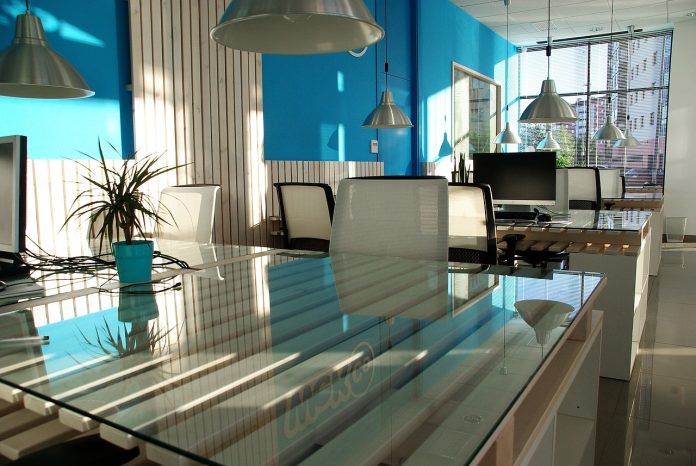As various studies suggest that the remote working shift has stifled innovation, Sarah Groves, below, director and co-owner at Catalyst digital marketing agency, explains how SMEs can use the impetus of the ‘Great Return’ to bring creativity back to the workplace
 In many ways, technology can bring us closer together. In the midst of the global pandemic, Zoom meetings and virtual events, mediums we may have been reluctant to use before, proved a godsend in keep communications flowing and businesses operations running in the absence of real-life contact. Equally, social media platforms allow us to connect to long-lost friends and family and even new people across the globe, instant messaging makes it possible to communicate effectively in real-time, and the all-important office WhatsApp group makes it possible to instantly bring together colleagues, regardless of location.
In many ways, technology can bring us closer together. In the midst of the global pandemic, Zoom meetings and virtual events, mediums we may have been reluctant to use before, proved a godsend in keep communications flowing and businesses operations running in the absence of real-life contact. Equally, social media platforms allow us to connect to long-lost friends and family and even new people across the globe, instant messaging makes it possible to communicate effectively in real-time, and the all-important office WhatsApp group makes it possible to instantly bring together colleagues, regardless of location.
Equally though, while technology can shape how we do business and forge connections with others, it can also drive us further apart.
Perhaps none more is this prevalent than in the creative setting. Inherently, creativity is a team sport. It requires collaboration where different people are brought together, viewing a brief or challenge from their own unique perspective and then combining that knowledge and insight to, together, create a solution. Of course, this can be done via a virtual setting. However, that’s not to say it necessarily should be. Trying to do traditional brainstorming via a Zoom call is a poor substitute for the energising presence of colleagues gathered around a table excitedly sharing and exchanging ideas. Science shares this stance too, with various behavioural economics and psychology studies demonstrating the superiority of in-person brainstorming over digital brainstorming. In fact, one recently study which saw 600 volunteers paired up to tackle a creativity task either together in the same room, or virtually over Zoom, found that those who worked virtually had 20% fewer ideas than those who met face to face, and also generated less creative ideas.1
At Catalyst, for example, even though we have continued to operate a hybrid working model since the tail-end of the pandemic, we tend to find that most of our employees prefer to come into the office anyway. This is because they find it to be more conducive to idea generation, brainstorming and the creativity essential to our agency.
As such, as more businesses gear up for ‘the Great Return’, there’s a big opportunity to use the transition to the physical office environment to refuel the creative gas tank. Here’s how:
Collaberative culture
To begin with, it’s about ensuring you have the right culture in place. As a general rule at Catalyst, we always reiterate that no idea is too big or too ‘out there.’ We want people to feel safe sharing their ideas and putting their suggestions out there. This is especially important for employees returning to the office who may have grown unaccustomed to in-person brainstorms and sharing their ideas out loud and in person. Achieving this requires a culture of open-mindedness which respects different opinions and nurtures novel ways of thinking. When employees feel like they can be their true authentic selves and won’t be judged or criticised, they are more likely to contribute.
Individual scope
When it comes to creativity in the workplace, it can be easy to assume that its all about big company wide brainstorms and big sweeping ideas. Yes, they have a place. But that’s not to overlook the importance of individual focus. Some employees work better when they have had time to mull over a brief – even if it means reconvening at later stage. In this way, providing areas for quiet work can be vital to ensuring creative focus and success.
Outside the box
From our experience, some of the best ideas happen when we think outside the box in our own approach to creative thinking. Take, for example, a walking brainstorm. This is a particularly great technique for helping quieter team members come out of their shell in a more dynamic, less enclosed setting. Also, a change of scenery can be a great way to get the creative juices flowing too. Other suggestions include team days out, impromptu coffee catch ups, even a yoga class. We also recommend ‘creative pairs’ where team members who don’t usually work together are teamed up – it’s a great way of putting different mindsets together to come up with something new.
Celebrate wins
Finally, it sounds obvious but celebrate success. This could be as simple as acknowledging a standout idea in a team meeting or providing incentives for those suggestions which make it to the drawing board or help secure the pitch. People want to be praised and recognised for their ideas. When creativity is rewarded it’s likely that your employees will be encouraged to go the extra mile in their creative thinking and feel like they are playing a vital role in the future trajectory of your business.
Creative mindset
Against the backdrop of a gloomy economy, having a creative mindset could make all the difference between success and failure, business growth or business decay. Therefore, while Zoom may have proven indispensable in the pandemic, it’s important to consider that a heavy reliance on this type of technology can come at a cost to creative thinking. Therefore as we look towards the potential end of the remote working era, taking the opportunity to reinstate the energy, dynamism and fun attached to the physical workplace is a great idea.


